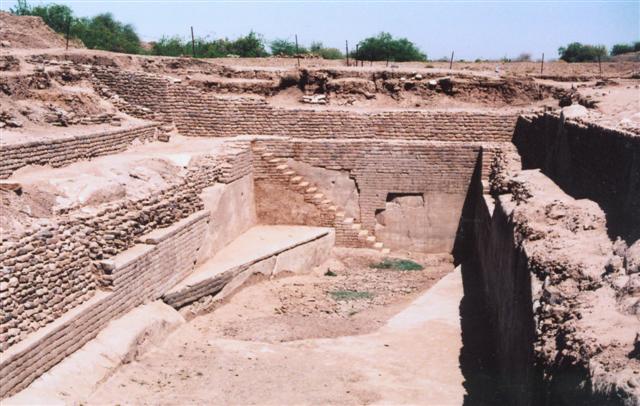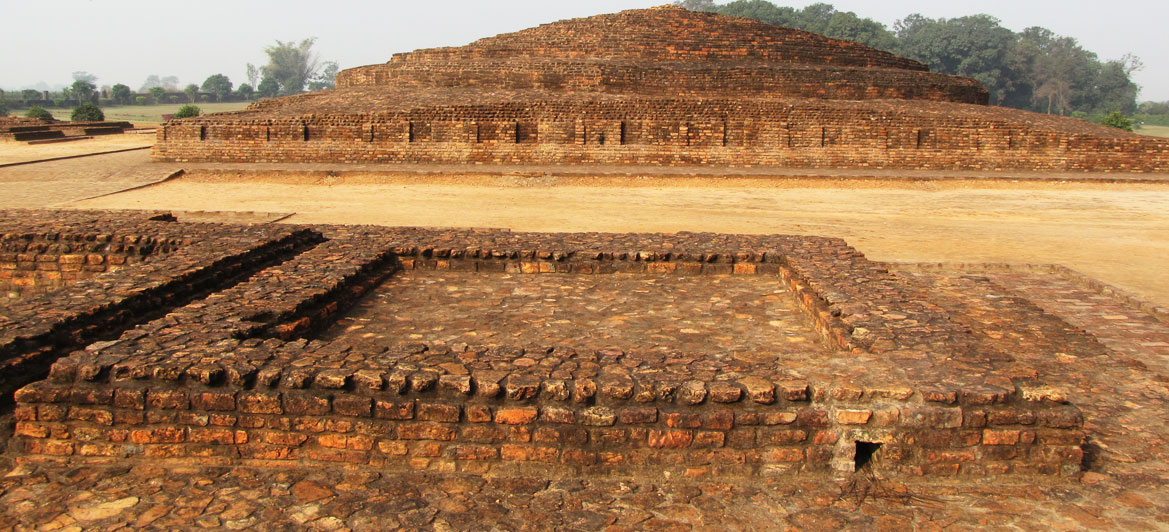- Home
- History of India
- Ancient India
- Ancient Indian Architecture
Ancient Indian Architecture
Ancient Indian architecture: Ancient Indian architecture is not only world famous but also present since various civilisation that took place in India. At different level different architecture came into existence and did fine tuning of the previous architecture. Every architecture includes various feelings, emotions of people and also about the nature. Sometimes various monuments were built in the memory of the loved one like the Taj Mahal or sometimes built in war memory like India gate.
The three major architectures that were present in ancient period
was the temple architecture; rock cut architecture and cave architecture. The
ancient architecture reflects the history, culture and religion of India. Some
other best known architecture during ancient period was Hindu temple
architecture and Indo Islamic architecture.
The Indus Valley civilisation had one of the best architecture during that period of time. Three words that can describe the ancient Indian architecture are the beauty, mathematical equations and mind blowing work. Indus valley civilisation period can be called as a very matured and intelligent period. The extensive town planning, the water drainage system gives evidence of the architectural mind of the people. It can be said that it is the most remarkable feature of this period. Some of the most imposing buildings during this period are the great bath at Mohenjo-Daro and the granary complex. This was intelligently constructed with air ducts and platforms divided into units. Some of the important places of Harappan civilisation can be found in Gujarat, Rajasthan, Uttar Pradesh and Haryana. Around 700 wells have been discovered making us to believe that cylindrical brick lines were invented during Indus Valley Civilisation.
During Mauryan Period the stone architecture further got better into
wood architecture. King Ashok of Mauryan dynasty who was a strong follower of
Buddhism established Pillars of Ashoka next to the Buddhists stupas. He also
built Mahabodhi temple in Bodh Gaya. Many temples were built during the Mauryan
period and the sculptures at Pataliputra and Pillars of Ashoka shows the great
architectural work during Mauryan period.
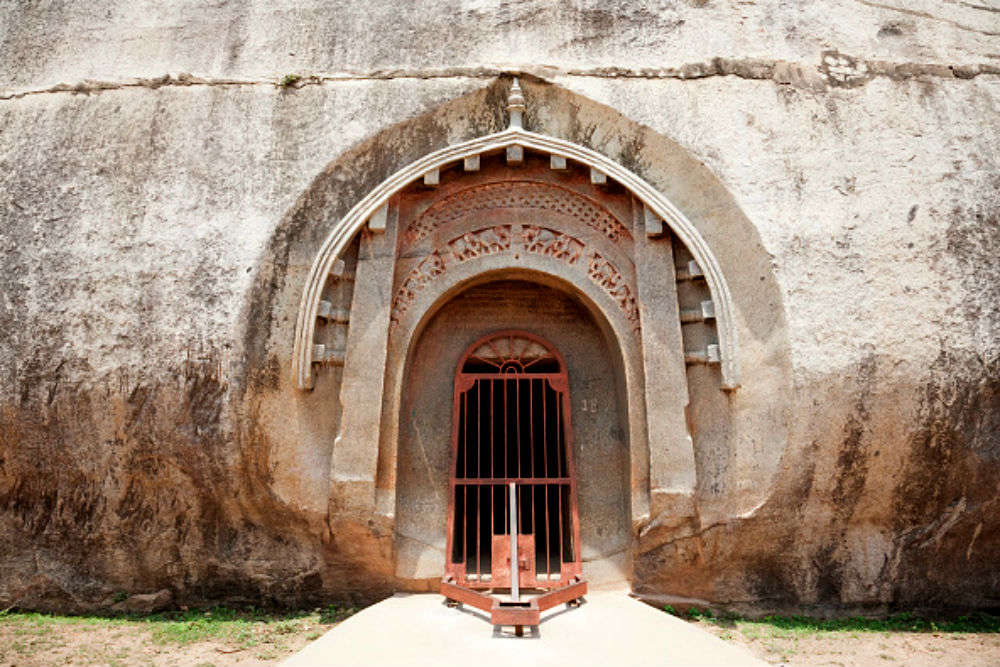
Finest piece of architecture can be found during the Mauryan
period. Chandragupta built many temples and palaces with wood which are
perished now. Ashoka who became a staunch follower of Buddhism built many
stupas scattered over the country. The famous Ashoka’s rock edict at Dauli
depicts his conversion to Buddhism after the kalinga war. It has a sculpted
elephant at the top. Some other important architecture which are a very
important tourist destination even to this date are the cave architecture at
Nagarjuna hill caves, the Sudama caves, Barabara hill caves in northern part of
Gaya. The most splendid and outstanding architecture during Asoka’s period is
the Ashokan pillar.
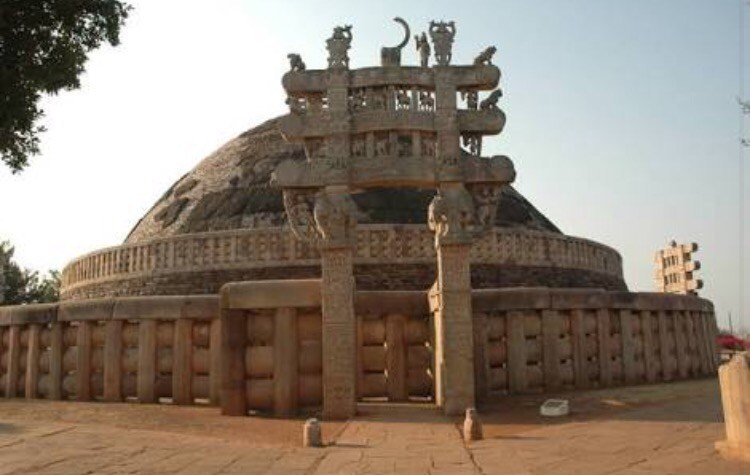
Buddhists Architecture
During the Buddhists period architecture was slightly different and more matured. There were three kinds of Buddhists architecture the stupas, monasteries and places of worship like temples, churches etc. Stupas were originally sculptures than the buildings. One of the oldest stupa that is present even to this day is the Sanchi stupa which is world famous and is present in the state of Madhya Pradesh India.
The original
structure was later made into more decorative and attractive. The first monastery
was built around 5th or 6th century during Buddha period
is at Bihar known as Jivakarama Vihara. These monasteries were usually built
with a purpose for monks to eat and sleep in groups and without any private
cells. It was usually built with two parallel and oblong Halls.
Stupas were the dome shaped religious monument. The eight stupas that are present are Rajagriha, Vaishali, Kapilavastu, Allakappa, Ramagrama, Pava, Kushinagar and Vethapida. Buddha has left instructions as to how show respect to the stupas.
With the development of
different religions like Buddhism, Jainism and Hinduism the architecture became
a predominant part in construction of temples. Many of these stupas, temples
have become a tourist destination places in India. Rock cut architecture and
cave architecture became more predominant during the rise of different
religions like Buddhism and Jainism. They are the most beautiful and
spectacular piece of architecture during ancient period. Some important rock
cut structures are chaityas, Viharas and temples.
Rock cut architecture
Rock cut architecture is one of the finest and spectacular
architecture of ancient India. Beautiful buildings, temples or structures are
created by excavating the natural solid rocks. They are closely related to
various religions and to their activities. Rock cut structures differ from the traditionally
built structure and are very similar to sculpture and then architecture. Some
of the prominent rock cut structures is Chaityas, Viharas and temples.
Basically the rock cut architecture has three basic uses for temples, tombs and
cave dwellings.
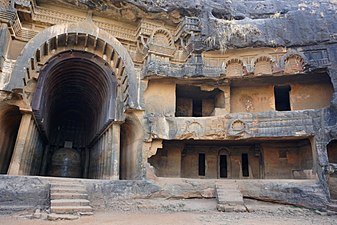
Earlier during ancient period the caves used to be the natural
inhabitants for the people. These people used the caves as shelter and when
time permitted they were even doing paintings on these rocks. The earlier
examples of rock cut architecture were of Buddhists and Jain Basadi, temples
and monasteries. Even though many cave temples, monasteries and stupas are
destroyed still rock cut architecture are very well preserved and maintained in
many places in India. Some important rock cut architecture include Barabar
Caves in Bihar, Saptarni Cave Bihar, Indrasala Cave, Udayagiri and Khandagiri
Caves.
Cave Architecture
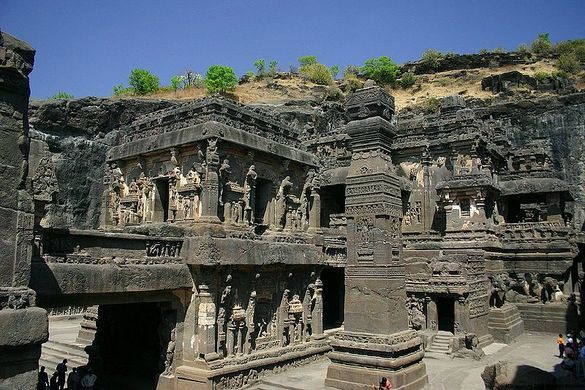
It is believed that cave architecture started around 3rd century
BC in India. Initially these caves were used by the Buddhists and Jains as a
place of worship. Some of the best known caves in India are Buddhists caves,
Ellora caves, Ajanta caves, Karla caves, Badami caves and Elephanta caves. One
of the beautiful caves at Karle is an example where Chaityas and Viharas were
excavated from huge rocks.
These cave architecture not only enlighten us with the ancient
architecture but makes us understand the culture, history, traditions that were
followed during the ancient period. After a brief dull period the cave
architecture further improved around 6th century with magnificent
Ajanta and Ellora. The Ajanta caves has been tagged by UNESCO as World Heritage
Site. The cave was built in two phases. The first phase was started around 2nd
century while the second phase was built around 400-650 CE.
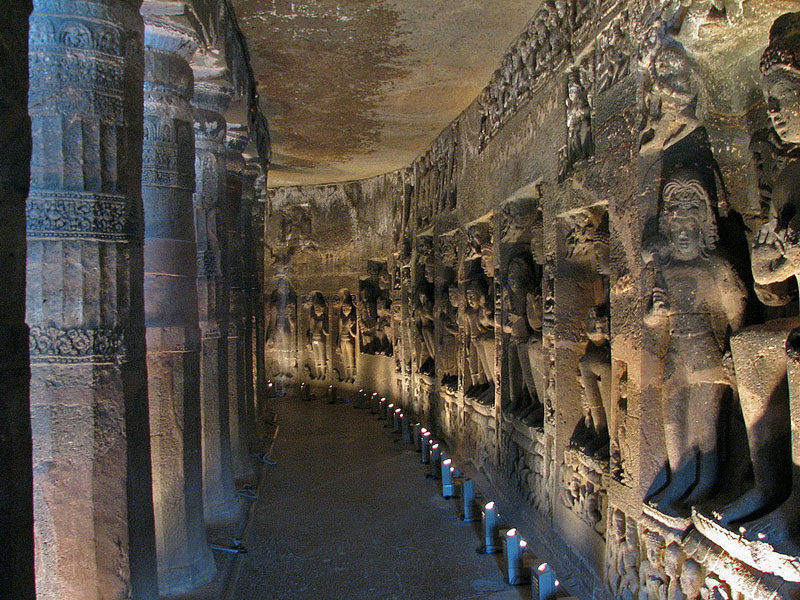
Ajanta cave is another important and magnificent piece of work
during the Buddhist period. It dates back to 2nd century BC.
Ajanta caves consists of prayer halls and different ancient monasteries of
Buddhists traditions. The temple is carved on a 250 ft wall of a rock. The
paintings on the wall of the rock depict the birth and life history of Lord
Buddha. Some other famous cave architecture is found in elephant cave, Ellora
caves and in some places in Karnataka. Gradually the architecture improved
during the Mauryan period.
Temple Architecture
Temple architecture started to grow in almost all parts of India. The
Hindu temple architecture or it could be Indo Islamic architecture both had its
own ways of designing the temples. The Hindu temple architecture had many varieties
like the Garbha Griha, Gopuram, Kalasa, Shikara and a Mandapa. The principles
of Hindu temple architecture were known as Shilpa Shastra and Vastu shastra.
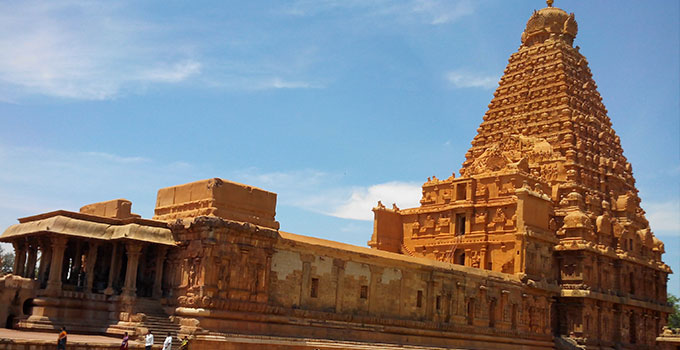
The important part of the temple architecture was the way it was
built and the decorations and the carvings done on the temple. The Garbha Griha
was the main place of the whole temple where the main deity was kept and
prayed. The main deity is kept in Garbha Griha and all the subsidiary deities are
kept within the temple complex. These kinds of temples are commonly found in
the South Indian temples. But however there are hardly any Hindu temples found
before the Gupta dynasty. The basic difference that was found between the North
Indian and South Indian temple were the Shikaras.
The South Indian temples had huge gopurams at the entrance of the temple while that was predominantly not present in north Indian temples. However there were many common features also between the North and the South Indian temples. Some of the best examples for North Indian temple and South Indian temples include Kandariya Mahadeva temple at Khajuraho, Sun temple at Konark, Brihadeeswarar temple at Tanjavur Tamil Nadu,Maru Gurjara.
Indian architecture saw different phases in the temple architecture
during the Badami Chalukya' s rule. Around 150 historical temples were built in
and around Badami, Pattadkal and Aihole complex. The huge temple architecture
further continued even during the Hoysala and Vijayanagara Empire period.
As the ruling changed from one dynasty to another even the architecture was improved and became more interesting. The architecture in South India was divided into Dravidian style of Tamil Nadu and Vesara style in Karnataka. The temple architecture was different and it had huge gopuras on which beautiful carving of God was made. With Gupta period and during the Mughal period architecture reached at its peak. The Mughal architecture is world famous and the most famous is the Taj Mahal in India. Every dynasty had its own unique style of architecture which can be cleared understood now from the monuments built during the ancient period.
The Indo Islamic was prominent during Mughal rule. One can witness the beautiful arch architecture in various Forts and monuments like Red Fort, Tomb of Humayun, Fathepur Sikhri, Gol Gumbaz and many more.
The architecture further got improved even during the British rule
and even to this day.
Please do share your thoughts with us by clicking the link here.
Related Pages
European Colonial Architecture
Update on coronavirus in India
Affiliate Disclosure:
If you make any purchase via a link on this site, I may receive a small commission with no added cost to you.
